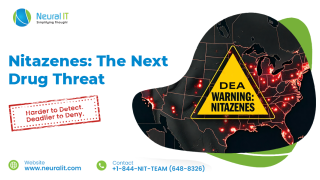Wisconsin's Detailed Fund Plan To Combat Opioid Crisis
Wisconsin's Detailed Fund Plan To Combat Opioid Crisis

Introduction
Wisconsin, which has already received the first $6 million of the anticipated $500 million in opioid settlement payments, intends to use a large portion of the early funds to increase the availability of fentanyl testing strips and the overdose-reversing medication naloxone, known as Narcan.
According to a state Department of Health Services plan presented to the Legislature's budget committee, other priorities for the $31 million in settlement funds anticipated this year include expanding addiction treatment facilities, helping Native American tribes severely affected by opioid overdoses, paying for residential treatment stays, and enhancing substance use prevention education in K–12 schools. The panel must respond by August 16th.
According to the DHS secretary, the plan outlines crucial areas where more money is required to strengthen our efforts to assist people with opioid use disorders throughout Wisconsin and to avoid future abuse, overdoses, and fatalities.
According to a preliminary count as of Monday that is sure to rise before the number is completed in November, a DHS representative claimed Wisconsin saw a record 1,415 opioid overdose fatalities last year. The previous high was 1,227 fatalities in 2020, which was 32% more than any prior year.
According to early statistics, Dane County had an increase in opioid fatalities last year from the previous record of 123 in 2020 to 139. Seven suspected overdoses, involving at least two fatalities, were recorded in a 24-hour period between last Monday and Tuesday, according to an overdose activity notice issued on Wednesday by Public Health Madison and Dane County.
Health experts blame the COVID-19 pandemic stress, an increase in synthetic opioids like fentanyl, and a rise in the usage of numerous substances concurrently for the nationwide spike in opioid fatalities. According to authorities, fentanyl is now present in every drug supply and is frequently detected in cocaine, heroin, methamphetamine, and even marijuana.
An international deal with Johnson & Johnson and three opioid distributors is expected to deliver more than $420 million to Wisconsin over the course of 18 years. The state got $6 million from the agreement late last month, and it expects to collect a total of $31 million this year. Local governments will receive 70% of the funds, while DHS will use 30% of them for its own purposes.
Additionally, the state will get $10.4 million over a five-year period thanks to a deal with the consulting business McKinsey. DHS has set aside part of the funds to pay for the room and board expenses associated with inpatient addiction treatment.
According to the state's attorney general, planned settlements with Teva and Allergan, legal actions against Purdue Pharma and Mallinckrodt Pharmaceuticals, as well as possible litigation against other businesses, should raise Wisconsin's overall opioid settlement money to more than $500 million.
$2 million will be spent on fentanyl testing strips, which were made lawful in the state in March, according to the DHS plan for the initial $6 million. The single-use paper strips can be submerged in water that has a little sample of a pill, powder, or injectable medicine on it. Fentanyl is visible as lines on the strips. The intention is to empower drug users to make wise choices, including consuming less of a substance or socializing with others rather than alone.
An additional 100 community agencies will have access to Narcan, thanks to a $3 million state initiative. According to DHS, the initiative has given out 65,000 doses of the medication, saving more than 3,200 lives in the last three years. A further $1 million will be used for initiatives tackling the underlying causes of substance misuse, such as housing and assistance for trauma rehabilitation.
The remaining $31 million will be split between $6 million for tribal nations and $11 million to assist in the construction or expansion of treatment and other service centers. Blacks and Native Americans experience nearly twice as many opioid deaths as the state average.




